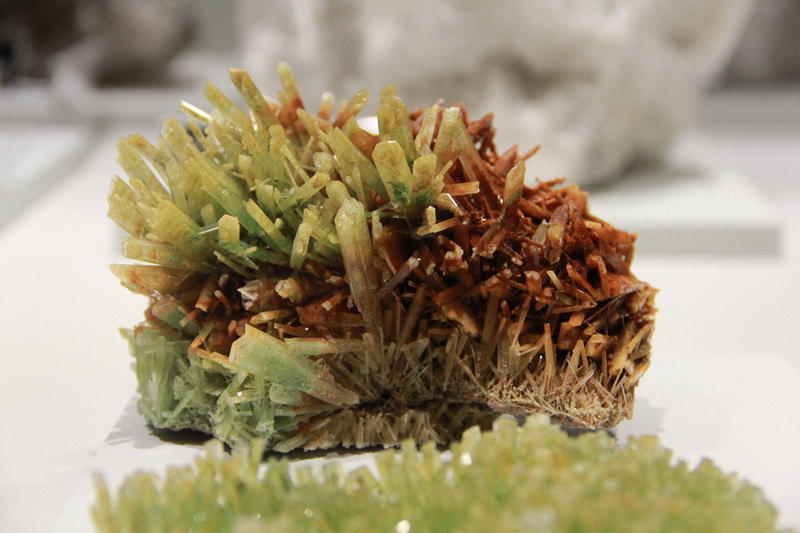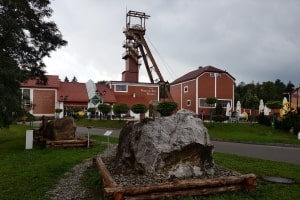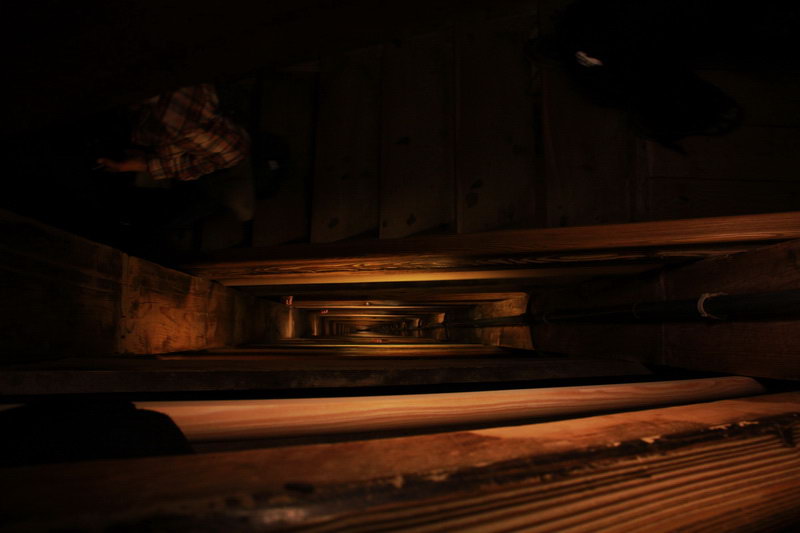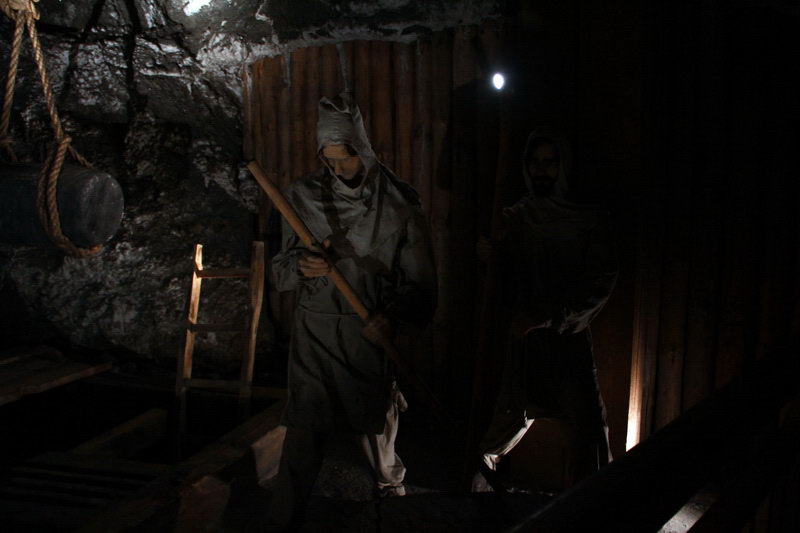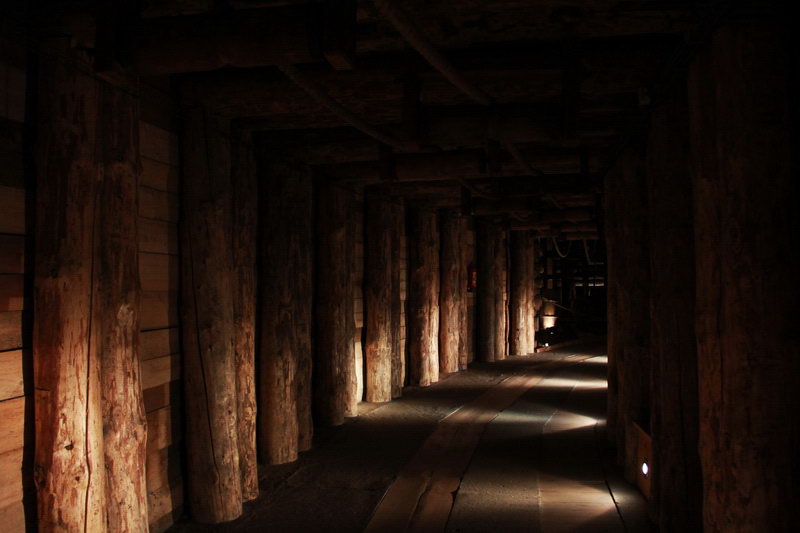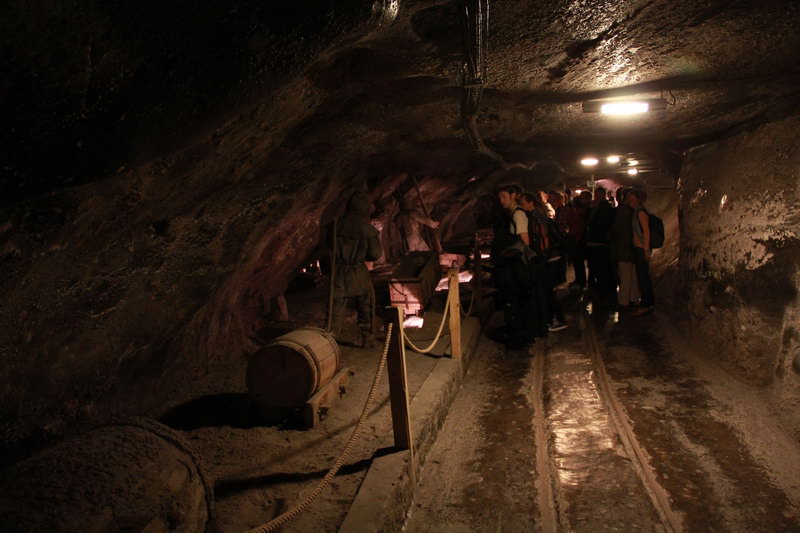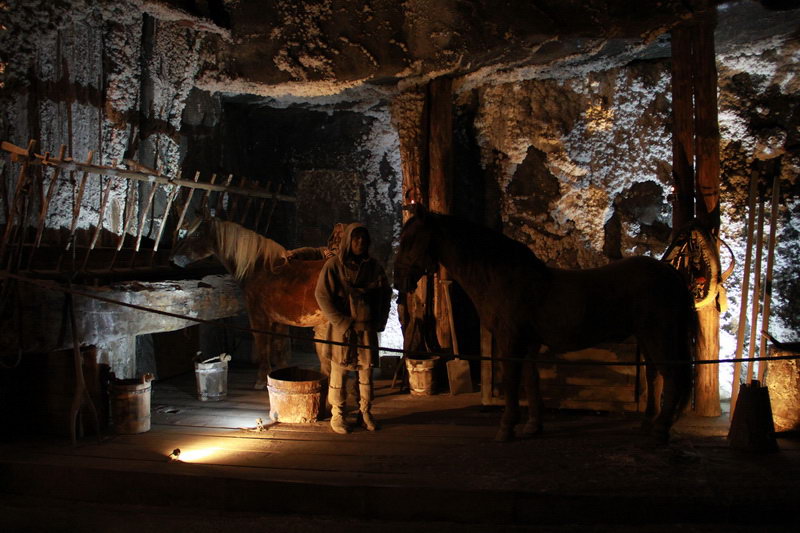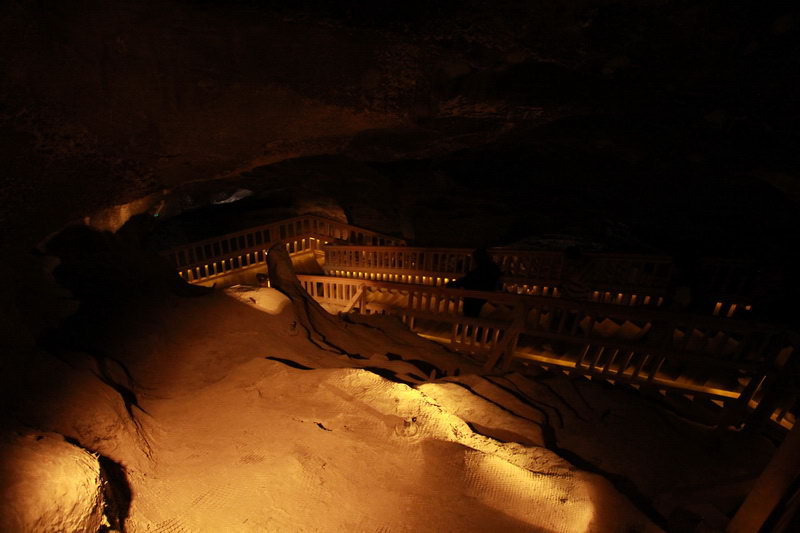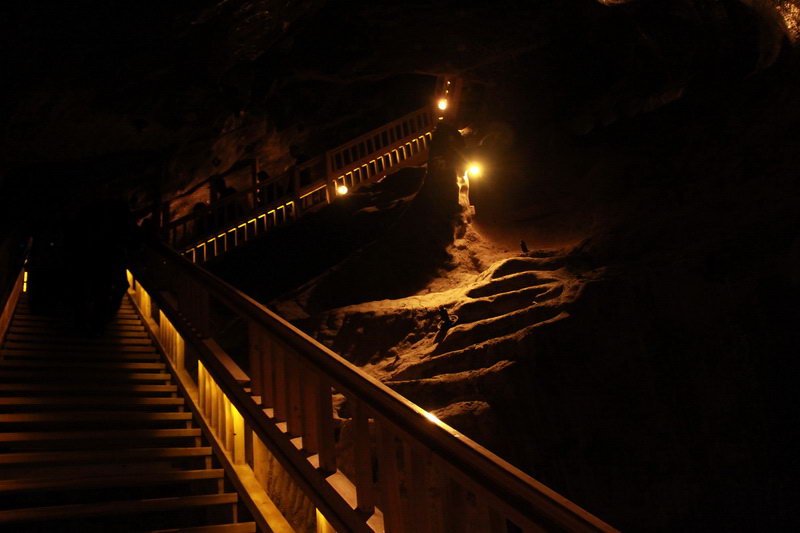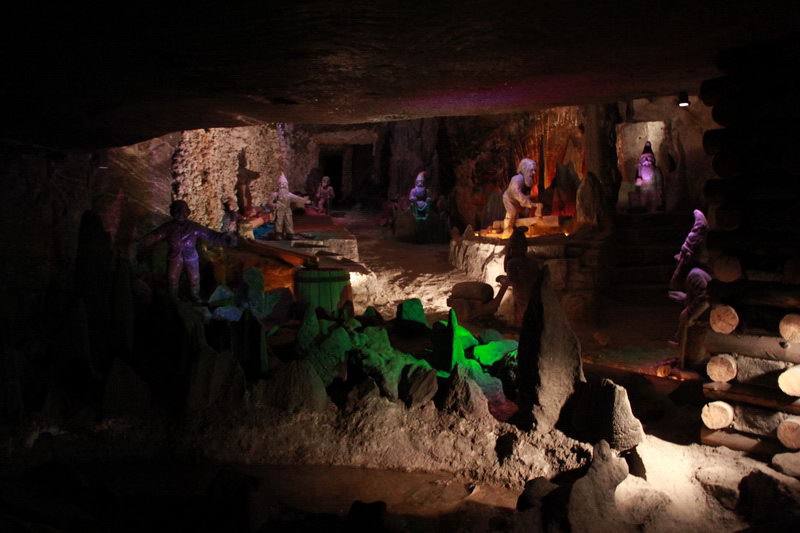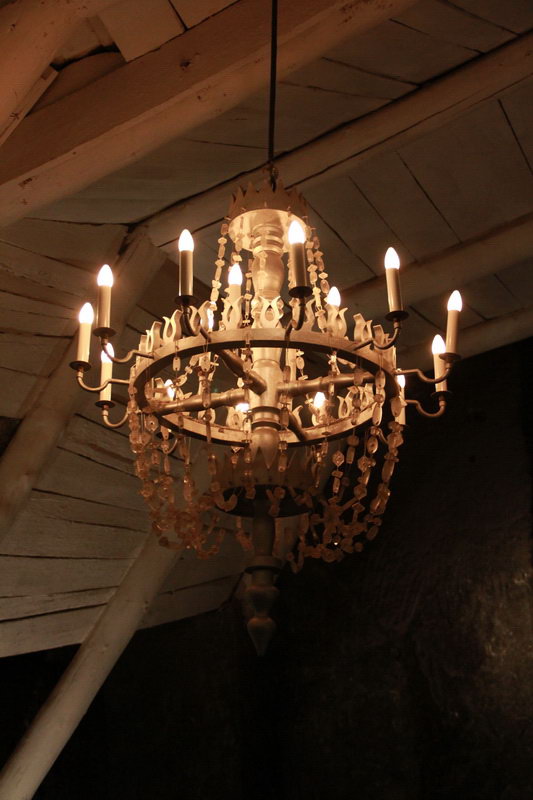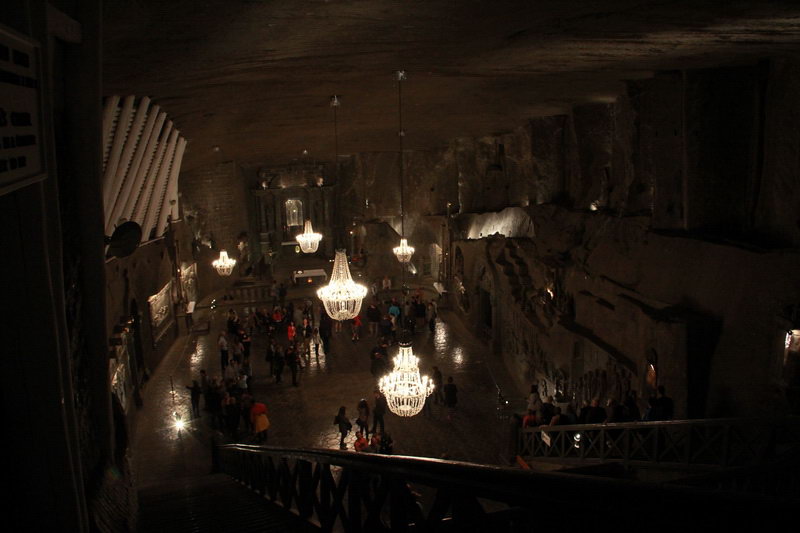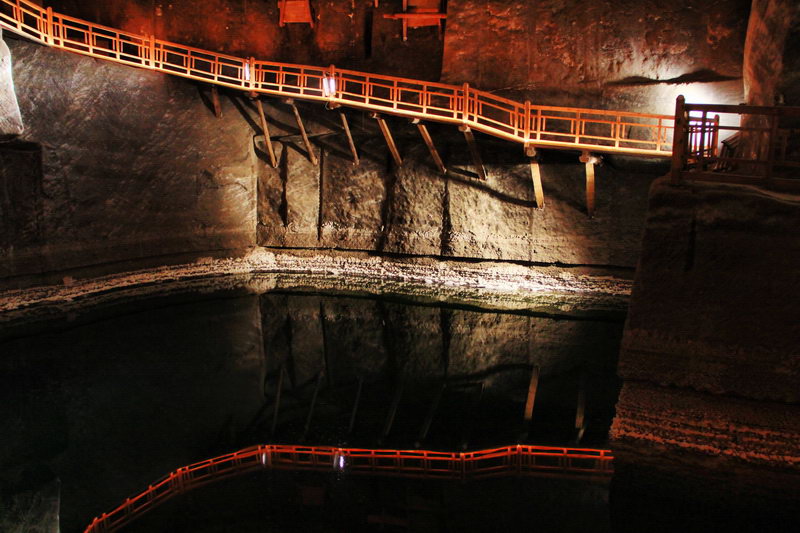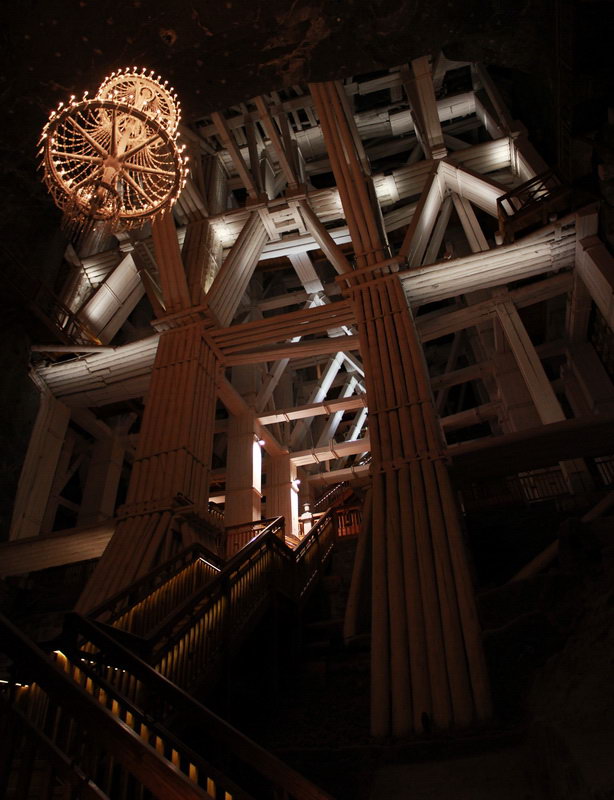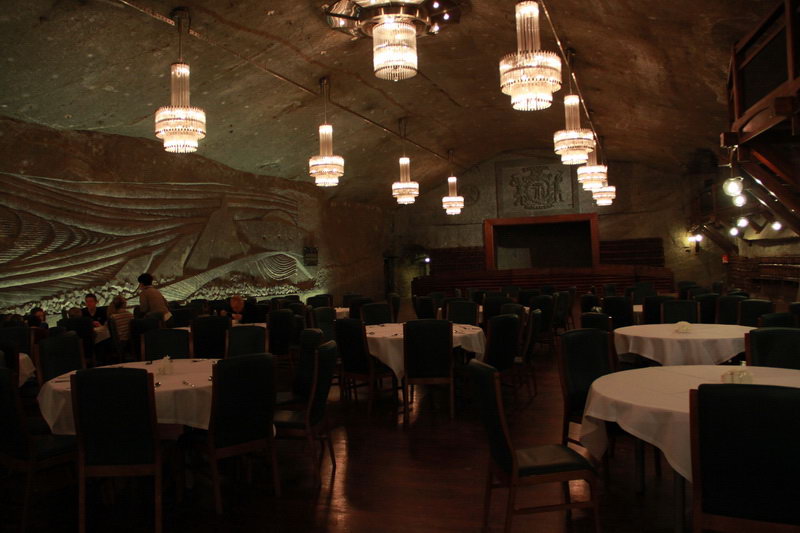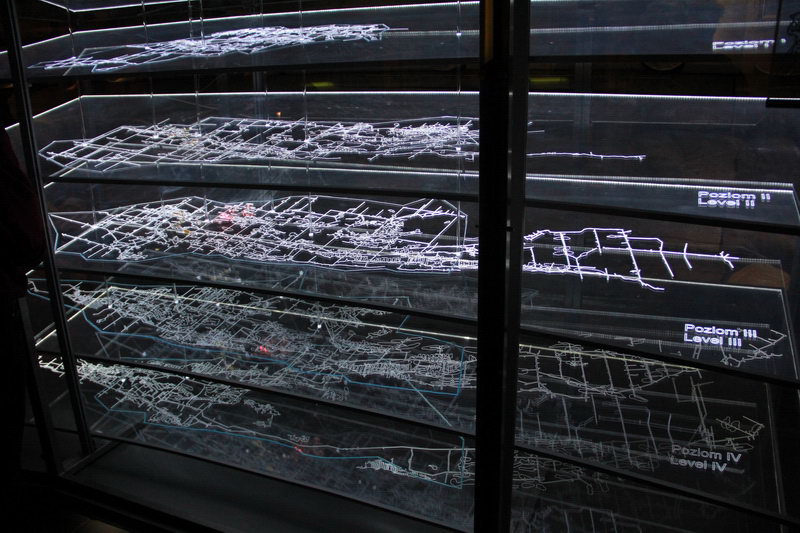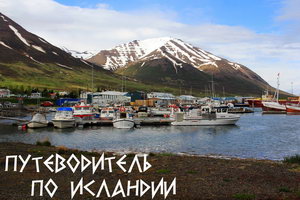During the preparation for the trip, I read a lot about them, everyone advised me to visit them, but I still had a worm of doubt. And why do we need this? We are in Krakow for only one day and there is so much to see, but to go there, waste time and let down into the mines only with a guide and it probably lasts an hour and a half. In general, we decided to ask Michala from the hostel, since he is local, he will definitely advise whether it is worth it or not. The answer was unequivocal - you definitely need to visit the Wieliczka salt mines, since you are unlikely to see this anywhere else. So we're going to Wieliczka.
You can always find out the cost of a visit on the website https://www.wieliczka.ru .
In 2020, the prices for the salt mines in Wieliczka are as follows, everywhere else prices for excursions are written in Polish and in a foreign language through a slash:
- adults 66 zl / 93 zl ()
- preferential 48-57 zl / 73-84 zl (discounts are valid for students and students under 26 years of age upon presentation of a student / student ID, as well as for children and the elderly)
- family 180 zl / 259 zl (a very popular type of discount in Europe, the cost is indicated for a family, usually it is two adults and two children, even if you have one child, it is still profitable)
If you want to take photos or shoot videos, then you should pay 10 zl separately. You will be given a sticker with a resolution.
After leaving Krakow in half an hour, and according to the speedometer 13 km. we arrived in Wieliczka. The exit is marked with a sign from the highway, and then everywhere there are signs for salt mine (salt mines). However, be careful - starting 2-3 km away. There are a bunch of salt mine parking signs made on anything. These are just parking lots and from them you still have to stomp and stomp to the main entrance. We were lucky - we did not fall for these inscriptions, realizing that we would stick the motorcycle almost everywhere and indeed just up the street from the main entrance there is a small free parking for 4-5 cars and there was a place!
You can also get to the salt mines in Wieliczka from Krakow by city bus number 304, which stops next to the railway station.
Salt mine in Bochnia, Poland
The Bochna salt mine is the oldest in Poland and one of the oldest in the world and Europe.
The history of the town of Bochnia has always been inextricably linked with the extraction of salt, ...
So the entrance with a huge inscription proclaiming that you are entering the territory of the Wieliczka salt mines. A lot of people in cafes and just on the territory are sitting, standing, scurrying back and forth eating ice cream, drinking water and beer - most are waiting for the tour to begin. We're going straight to the building. To the left at the end is the entrance to the excursions with small flags indicating the language of the excursion. The tours are conducted in many languages - Polish, English, French, Italian, German, Russian. But only English and Polish excursions are available all day, but, for example, Russian only a couple of times a day. We were late for the Russian-speaking one, it had just started, but we managed to get to the English one, which was just about to start. Some of our citizens, wanting to save money, go on a Polish tour (it is a little cheaper), but I would not recommend it because the guide tells a lot of very interesting information.
Tickets have been bought, we are going down at 13:00.
The tour begins with a descent down the Danilovich mine shaft, which leads to the fourth level of the mines, but tourists are not allowed to go so low, they only reach the first level at a depth of 64 meters. The descent takes place along a spiral wooden staircase, at the end people usually crowd, so then a small corridor, or rather the near-barreled courtyard of the Danilovich trunk, and the guide begins his story.
There is enough space for everyone, just people like to crowd.
The territory of the copies, including the Sulkuv district (in the east) and the Barych well (in the west) has a length of 10 km (in the direction from east to west) and a width of 0.5 to 1.5 kilometers (from north to south). Before the deposits were discovered, salt was extracted by boiling it from salt solutions from salt springs protruding to the surface. This method was known as early as 3,500 years BC. As land-based sources became exhausted, people began to look for salt underground. Mine wells were punched, bumping into deposits of rock salt. Salt has been mined continuously at this place since the end of the XIII century.
Then we go to the chamber of Nicolaus Copernicus. This chamber appeared by 1785, as a result of the production of a block of green salt (yes, there are not only white, but also green, blue, red and other salts, which you will have the opportunity to verify at the end). In the first half of the 19th century, a horse-drawn drive with a vertical shaft was installed here (traces of it still remain on the floors) to transport salt in the Alexandrovica mine from the lower levels to the first (highest) one. The monument to Nicholas Copernicus was sculpted from a block of salt by sculptor Vladislav Hapek in 1973. Nicolaus Copernicus most likely visited a salt mine, as recalled by this sculpture installed in this chamber on the 500th anniversary of the birth of the great Polish astronomer.
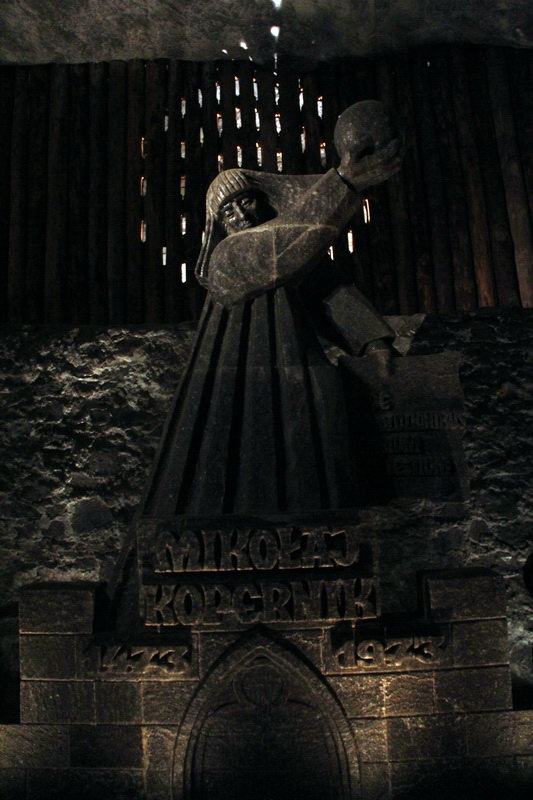
"Kasht" or "bonfire" is a shaft mount, a log made of wooden logs, which serves to support the roof of a worked-out chamber sinking under rock pressure. Wood used in salt mines, primarily for construction purposes, is an indispensable material; salt impregnates it and prevents it from rotting, but there is also a disadvantage that the tree burns and if a fire occurs, the consequences can be very sad.
We go to the Chapel of St. Antonia, which was created at the end of the XVII century. This is the oldest surviving underground chapel, where miners came to church service before starting work (the first service was held in 1698). The chapel is hollowed out in a block of green salt and contains several salt sculptures. It's worth noting. that all the sculptures that you will meet are made of salt.
Through the Janovice chamber we get into the burnt-out chamber. It is here that the dangers threatening miners are shown: landslides and gas explosions.The danger of collapse is shown by two wooden pillars, the so-called witnesses, breaking under the onslaught of the mountain range. During salt extraction, methane (CH4) gas is released from rocks, which is lighter than air and therefore accumulates under the arches of the workings. In certain proportions, when combined with air, it forms an explosive mixture that explodes when interacting with fire. In other proportions, this mixture burned slowly without an explosion. In ancient times, when effective methods of methane removal by ventilation of workings were not yet known, and work was carried out with an open flame of lamps, this gas was extremely dangerous. In order to prevent its significant concentration and explosion, methane was removed by burning. This was done by experienced miners, who were called "penitents." Dressed in wet clothes, they crawled along the bottom of the mine and burned methane with torches mounted on long poles.
Further through the Selets chamber, where the ways in which salt was transported and the village of salt workers of the Neolithic era are presented, we descend to the chamber of Casimir the Great.
In the chamber there is a bust of Casimir and a horse-drawn drive, which is an authentic wooden mechanism designed for vertical transportation of huge salt blocks through mine pits from the lower levels to the upper ones. The drive was driven by four horses. Naturally, there were those who wanted to be in the role of horses and tried to rotate the drive - the drive still works and the bucket rose under their pressure, but empty and small, I think the horses had much harder.
Speaking of horses, they were lowered into the mines using a number of woven nets on which the suspended horse was lowered down, some grew up there since childhood. During the tour, you will see stuffed horses used in the exhibition more than once.
We go up the steps to the Peskov Rock chamber. It is this camera that connects the first and second levels of the mines. Tourists are walking along a new wooden staircase, but on the left they can see the old steps hollowed out in salt.
Through the longitudinal drift of the Kunegund we pass on, past the courtyard of the Kunegund in which the figures of dwarves are installed, which delight not only children, but also adults. The good dwarves were considered the patrons of the miners.
There are many chapels on all levels, so we continue through the chapel of the Holy Cross and exit into the chapels of St. Kinga. A large hall, a lot of people from different excursions. Usually they take a break for 5-7 minutes here, because we have been underground for about an hour and not everyone is ready to spend so much time on their feet.
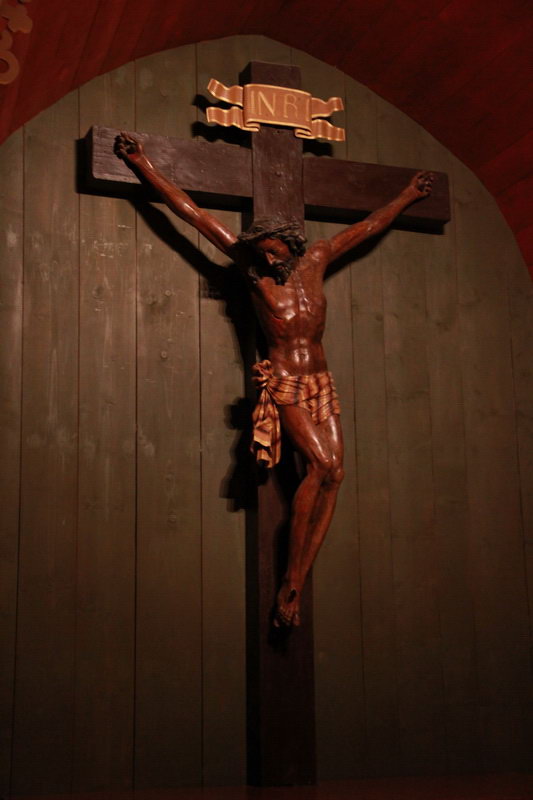
For those who are looking at sculptures and statues, for those who have a short break in the toilet and we go on. It is worth noting that the groups go almost in a continuous sequence and there is time in the photo only during the guide's story, and the receiver allows you not to miss anything interesting from the story. A tripod could be useful, but there is hardly any time to install it. I didn't take mine, and the man from our group with a tripod never managed to use it.
Going down even lower, we visit the chamber of Erasmus Baronch, this is the name of one of the directors of the salt mines. This camera is interesting from the point of view of the mountain structure, and besides, it is simply beautiful. It was developed in the XIX century in a block of green salt. A natural way to ensure the safety of the workings was the installation of wall-mounted or freestanding (central) salt columns, which can be observed in this chamber. The chamber contains an artificial lake (about 9 meters deep) filled with brine (aqueous salt solution) with a concentration of about 320 g of salt per liter of water.
The road leading down leads to the Michalowice Chamber on the second lower level already at a depth of 110 meters. In this chamber, you can see the ceiling going up and almost indistinguishable, it reaches the first level. And also, we can say, a work of art by carpenters, columns supporting the structure and a staircase between them. Climbing the stairs is naturally forbidden.
We pass through the next row of cameras in Drozdowice, Weimar. Each is beautiful and unusual in its own way.
Descent and again one of the many cameras, this time by Josef Pilsudski. The bottom of the chamber is filled with saline solution and is connected to another chamber by a small tunnel.
Unnoticed, we were already at a depth of 125m. and we go along one of the drifts. It should be noted that in many corridors large and rather heavy doors are installed, firstly to localize the fire if there is a fire, as well as to prevent drafts, which is especially felt when you open or close the door.
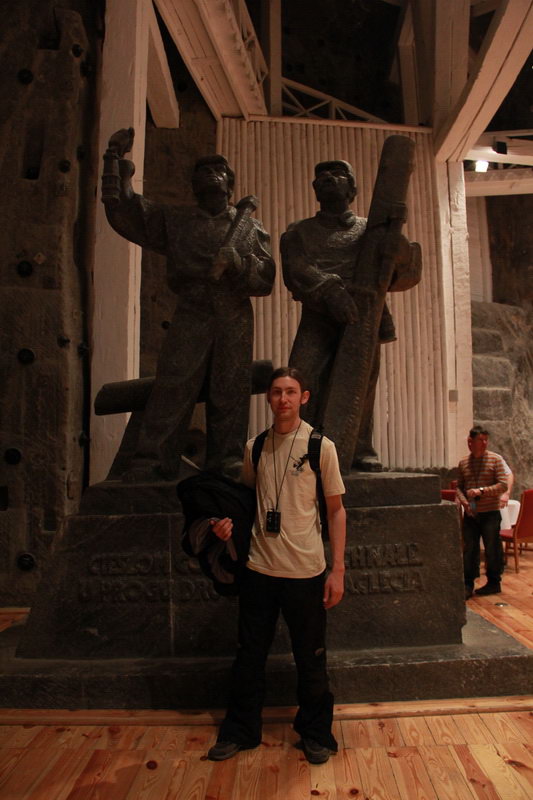
We are greeted by Stanislav Staszyce's camera - this is the tallest camera on our way, its height today is 36 meters.
So the main tour is coming to an end. We enter Witold Budryk's cell, where the restaurant is currently located, if desired, you can stay and taste local food.
The Warsaw camera. This is a fairly large mine (length - 54 m, width - 17 m, height - 9 m), from which about 20 thousand tons of salt were extracted.
Due to its size, the camera is used as a entertainment and sports hall.
The Vistula Camera provides everyone with the opportunity to purchase souvenirs. It is here that the guide leaves the group and you can return to the cafe / restaurant, buy souvenirs slowly and just sit on the bench. If you want to get out of here as soon as possible, then going a little further you get into the Danilovich's yard at a depth of 135m. from where there are three ways. Upstairs for organized groups, upstairs for individual tourists and to the museum. For some reason, many people do not go to the museum, but in vain. A museum guide is already included in the price, although a hike through the museum will require you another 30-40 minutes of time, but you will still walk underground, see many exhibits and climb in a completely different place. However, then you will have to walk back about 400 meters along the ground to the main entrance.
Returning with the guide to the main entrance, I had the opportunity to ask a few questions. The main question was: "Is it possible to go lower?". After all, we have visited only two levels, and there are nine of them. It turns out that it is possible, but such excursions are booked in advance and for a group of at least 10 people, you are given overalls, helmets and go ahead because there are no equipped corridors and neat ladders, but you can feel like a real salt miner.
UPD. Now there are already organized mountain excursions where you can feel like a sole earner!
This time, of course, we did not succeed, but the thought remained in our head.
